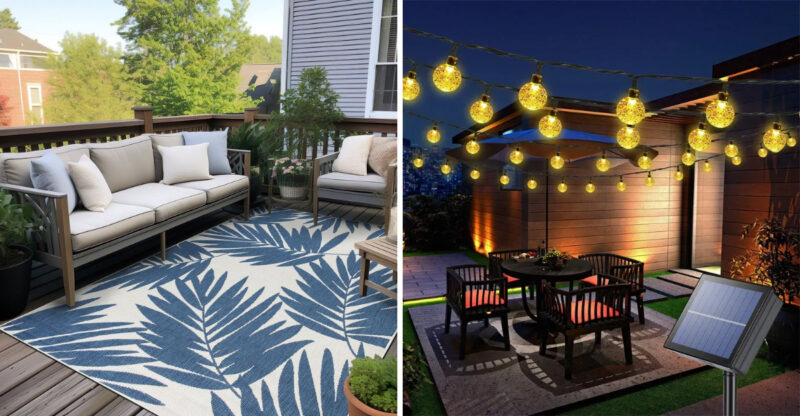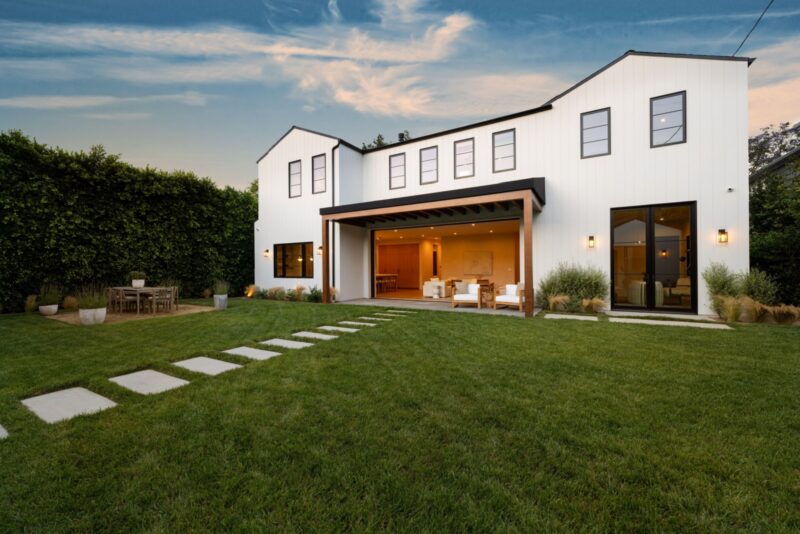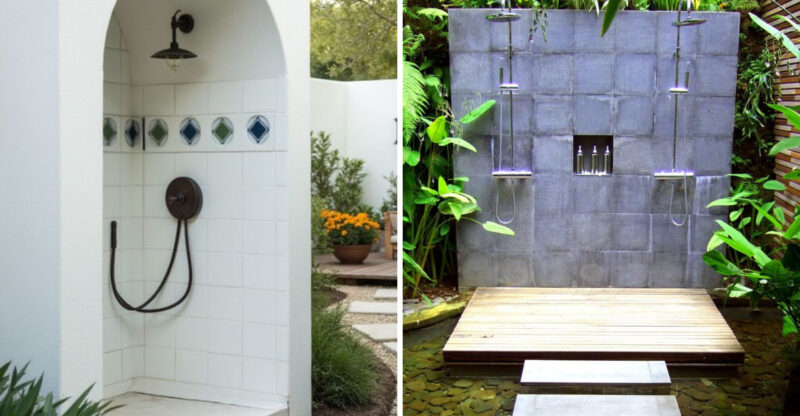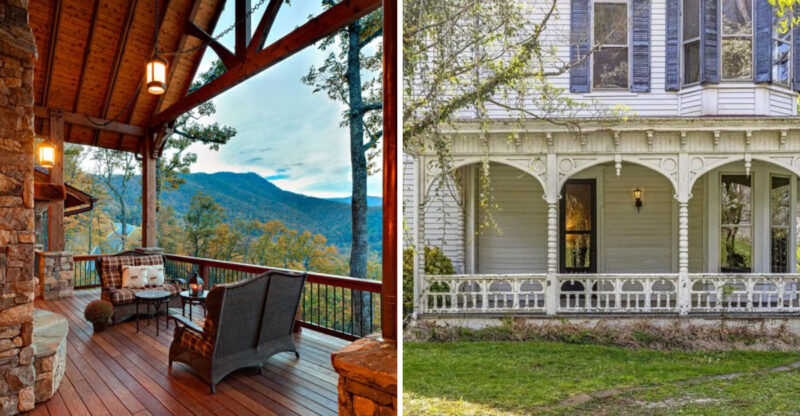8 Landscaping Mistakes That Make Your Yard Look Sloppy

A beautiful yard doesn’t happen by accident it takes thoughtful planning and consistent upkeep. When maintenance lapses, even the best outdoor spaces can start to look untidy and neglected.
Avoiding common landscaping pitfalls can help your property shine while potentially saving you effort and expense over time.
Here are twelve mistakes that might be keeping your yard from reaching its full potential. Keep in mind that results can vary depending on climate, soil type, and plant choices.
1. Overgrown Shrubs
Wild, untamed shrubs create an instant impression of neglect. When left to grow unchecked, these plants transform from neat landscape elements into shaggy monsters that overwhelm your yard’s design. They can block windows, crowd walkways, and even damage your home’s foundation or siding.
Maintaining shrubs requires regular trimming, ideally at least twice a year. Many homeowners underestimate how quickly certain varieties grow, especially in spring and summer. If you’re not sure how to properly shape your shrubs, consider hiring a professional for an initial pruning to establish the right form.
Remember that different shrubs have different pruning needs – some flower on old wood, others on new growth. Understanding what you’re growing helps you avoid cutting off next season’s blooms.
2. Unkempt Lawn Edges
Ragged, undefined edges between your lawn and garden beds create a sloppy, unfinished appearance. These fuzzy boundaries allow grass to invade flower beds and mulched areas, creating extra work and visual chaos. The difference between an amateur-looking yard and a professional one often comes down to these crisp transitions.
Creating clean edges requires initial effort but makes ongoing maintenance easier. Use a half-moon edger or power edger to cut a clear line, then maintain it with regular trimming. Metal, plastic, or stone edging materials provide more permanent solutions that reduce maintenance needs.
Where your lawn meets driveways and sidewalks, a string trimmer helps maintain that manicured look. This small detail dramatically improves your yard’s overall appearance with minimal investment.
3. Weedy Flower Beds
Nothing screams neglect faster than flower beds overrun with weeds. These unwanted plants compete with your intentional plantings for water, nutrients, and sunlight, eventually choking out the flowers and shrubs you actually want. Weeds multiply quickly, making a small problem enormous if left unchecked.
Preventing weeds starts with proper bed preparation and regular maintenance. A good layer of mulch (2-3 inches) helps suppress weed growth while retaining moisture for your desired plants. Hand-pulling small weeds before they establish deep roots or go to seed saves enormous headaches later.
Consider installing landscape fabric beneath mulch in problem areas. Though not perfect, it creates an additional barrier against persistent weeds while still allowing water to reach plant roots.
4. Cluttered Pathways
Obstructed walkways not only look untidy but create hazards for anyone visiting your property. When plants spill over onto paths or garden tools get left out, your landscape instantly appears neglected. Pathways should guide movement through your yard while remaining clear and inviting.
Regular trimming keeps plants from encroaching on walking spaces. Choose appropriate plants for pathway borders those that naturally stay compact or grow upright rather than sprawling varieties. For tools and equipment, establish a storage system that makes it easy to put things away after use.
If your pathways themselves are deteriorating with loose stones, cracked pavers, or eroding edges addressing these issues improves both safety and appearance. A well-maintained path with clean edges provides structure to your entire landscape design.
5. Dead or Dying Plants
Brown, withered plants immediately signal landscape neglect. Whether it’s a forgotten hanging basket, drought-stressed shrubs, or frost-damaged perennials, dead plant material brings down your yard’s entire appearance. These botanical corpses become focal points for all the wrong reasons.
Regular monitoring helps catch plant problems early. Watch for signs of stress like yellowing leaves, wilting, or unusual spotting that might indicate disease or pest issues. When plants do die, remove them promptly rather than letting them linger as sad reminders of gardening failures.
Consider why plants died before replacing them. Was it improper watering, poor soil conditions, or simply the wrong plant for that location? Addressing the underlying cause prevents repeated disappointments and creates a more sustainable landscape that stays looking fresh year-round.
6. Excessive Lawn Chemicals
Overuse of fertilizers and pesticides creates telltale signs of amateur lawn care. The striped pattern of uneven fertilizer application, burned patches from excessive product, and the unnatural deep blue-green color of over-fertilized grass all signal poor maintenance practices. Beyond appearances, chemical overuse harms beneficial organisms and can contaminate local waterways.
Responsible lawn care starts with soil testing to determine actual nutrient needs rather than following generic application schedules. Slow-release organic products often provide more even, sustained feeding without the dramatic growth surges that lead to increased mowing and thatch buildup.
When pest problems arise, targeted treatments for specific issues cause less collateral damage than broadcast applications. Many lawn problems resolve through improved cultural practices like proper mowing height, adequate watering, and overseeding with pest-resistant grass varieties, reducing or eliminating chemical dependencies.
7. Poorly Placed Garden Decorations
Random, mismatched decorations scattered throughout your yard create visual chaos rather than charm. The garden gnome collection, plastic flamingos, and assorted yard art might each hold personal meaning, but without thoughtful placement, they contribute to a cluttered, disorganized appearance that detracts from your plants and hardscaping.
If you enjoy garden decorations, consider creating intentional vignettes where items relate to each other and the surrounding plants. Limit the number of decorative elements, choosing quality over quantity. Scale matters too – tiny figurines get lost in large beds, while oversized decorations can overwhelm small spaces.
Weather-resistant materials like cast stone, metal, or high-quality ceramics maintain their appearance longer than plastic alternatives. When decorations fade, crack, or break, replacing or removing them keeps your landscape looking intentional rather than abandoned.
8. Improper Drainage
Standing water after rain creates both eyesores and plant health problems. Those puddles on lawns, soggy mulch beds, and perpetually damp areas near foundations signal drainage issues that detract from your landscape’s appearance and functionality. Water should move through your yard, not collect in it.
Addressing drainage problems might involve simple solutions like redirecting downspouts or more complex interventions such as installing French drains or dry creek beds. The key is understanding water flow across your property and working with rather than against natural patterns.
Sometimes drainage issues offer creative opportunities. Rain gardens planted with moisture-loving species turn problem areas into attractive features while managing runoff. Proper grading away from structures prevents more serious issues like foundation damage or basement flooding, making drainage solutions both aesthetically and structurally important.






